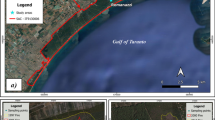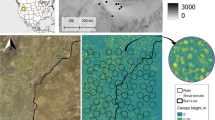Abstract
In face of future climatic conditions, methods to ensure the success of forest plantation in warm and dry conditions are required. Mechanical site preparation (MSP) prior to planting is widely used around the world to enhance seedling establishment success. Our study aimed at identifying, among a set of MSP methods that are used in practical forestry, which methods ensure plantation success under dry weather conditions.
We evaluated the combined effects of summer drought (estimated using the Standard Precipitation Index) and MSP severity (estimated using vegetation cover in the immediate seedling vicinity one year after MSP) on 1-year seedling survival. We used a network of 20 experimental sites established in France over a 10-year-period, and where seedlings were planted after various MSP.
In all treatments (severe MSP, moderate MSP, no MSP), seedling survival was higher in years with rainy summers than in years with dry summers. In rainy years, both moderate and severe MSP methods slightly improved the seedling survival rate (95%) compared to the unprepared control (88%). In dry years, seedling survival was similar after moderate MSP or with no MSP (50 and 54%, respectively), whereas it was much higher after severe MSP (79%).
In practical forestry, severe MSP appears as an option to enhance early seedling survival, especially when summer precipitations are lower than the seasonal average, whereas moderate MSP does not significantly improve seedling survival compared to an unprepared control, in all summer weather conditions.

Similar content being viewed by others
Data availability
The datasets generated during the current study are available from the corresponding author upon reasonable request.
References
Boutte B, Husson C, Saintonge FX (2023) Quelle a été l’évolution des taux de succès des plantations de l’année au cours des quinze dernières années ? in: Expertise collective CRREF «Coupes Rases et Renouvellement des peuplements Forestiers en contexte de changement climatique », Rapport scientifique de l’expertise, editors: Landmann G Paris: GIP ECOFOR, RMT AFORCE (mai 2023) 624–635
Chaves Cardoso J, Burton PJ, Elkin CM (2020) A disturbance Ecology Perspective on Silvicultural Site Preparation. Forests 11:1278. https://doi.org/10.3390/f11121278
Chirino E, Vilagrosa A, Cortina J et al (2009) Ecological restoration in degraded drylands: the need to improve the seedling quality and site conditions in the field. In: Forest management. Grosberg, Editor, pp 85–158
Cole E, Lindsay A, Newton M, Bailey JD (2018) Eight-year performance of bareroot Douglas-fir and bareroot and plug western larch seedlings following herbicide applications, northeast Oregon, USA. New Forest 49:791–814. https://doi.org/10.1007/s11056-018-9653-5
R Core Team (2023) R: A language and environment for statistical computing. R Foundation for Statistical Computing, Vienna, Austria. https://www.R-project.org/
Cribari-Neto F, Zeileis A (2010) Beta regression in R. J Stat Softw 1–24
del Campo AD, Segura-Orenga G, Ceacero CJ et al (2020) Reforesting drylands under novel climates with extreme drought filters: the importance of trait-based species selection. For Ecol Manag 467:118156. https://doi.org/10.1016/j.foreco.2020.118156
Del Campo AD, Segura-Orenga G, Bautista I et al (2021) Assessing reforestation failure at the project scale: the margin for technical improvement under harsh conditions. A case study in a Mediterranean Dryland. Sci Total Environ 796:148952. https://doi.org/10.1016/j.scitotenv.2021.148952
del Campo AD, Segura-Orenga G, Molina AJ et al (2022) On the need to further refine stock quality specifications to improve Reforestation under climatic extremes. Forests 13:168. https://doi.org/10.3390/f13020168
Dixon PM, Pechmann JHK (2005) A statitical test to show negligible trend. Stat Rep 86:1751–1756
Dumas N, Dassot M, Pitaud J et al (2021) Four-year-performance of oak and pine seedlings following mechanical site preparation with lightweight excavators. Silva Fenn 55. https://doi.org/10.14214/sf.10409
Frelich LE (2002) Forest dynamics and disturbance regimes. Cambridge University Press, p 266
Grossnickle S (2018) Seedling establishment on a forest restoration site – an ecophysiological perspective. REFOR 110–139. https://doi.org/10.21750/REFOR.6.09.62
Grossnickle SC, Ivetić V (2022) Root system development and field establishment: effect of seedling quality. New Forest 53:1021–1067. https://doi.org/10.1007/s11056-022-09916-y
Hjelm K, Nilsson U, Johansson U, Nordin P (2019) Effects of mechanical site preparation and slash removal on long-term productivity of conifer plantations in Sweden. Can J Res 49:1311–1319. https://doi.org/10.1139/cjfr-2019-0081
IPCC (2023) Summary for policymakers. In: Lee H, Romero J (eds) Climate Change 2023: synthesis report. Contribution of Working groups I, II and III to the Sixth Assessment Report of the Intergovernmental Panel on Climate Change [Core writing Team. IPCC, Geneva, Switzerland, pp 1–34. doi: https://doi.org/10.59327/IPCC/AR6-9789291691647.001
Iwasaki A, Noda T (2018) A framework for quantifying the relationship between intensity and severity of impact of disturbance across types of events and species. Sci Rep 8:795. https://doi.org/10.1038/s41598-017-19048-5
Keenan RJ (2015) Climate change impacts and adaptation in forest management: a review. Ann for Sci 72:145–167. https://doi.org/10.1007/s13595-014-0446-5
Kurth VJ, D’Amato AW, Bradford JB et al (2020) Assessing the ecological impacts of biomass harvesting along a disturbance severity gradient. Ecol Appl 30:e02042. https://doi.org/10.1002/eap.2042
Lindner M, Fitzgerald JB, Zimmermann NE et al (2014) Climate change and European forests: what do we know, what are the uncertainties, and what are the implications for forest management? J Environ Manage 146:69–83. https://doi.org/10.1016/j.jenvman.2014.07.030
Löf M, Dey D, Navarro RM, Jacobs DF (2012) Mechanical site preparation for forest restoration. New Forest 43:825–848
Luoranen J, Riikonen J, Saksa T (2023) Damage caused by an exceptionally warm and dry early summer on newly planted Norway spruce container seedlings in nordic boreal forests. For Ecol Manag 528:120649. https://doi.org/10.1016/j.foreco.2022.120649
Mataruga M, Cvjetković B, De Cuyper B et al (2023) Monitoring and control of forest seedling quality in Europe. For Ecol Manag 546:121308. https://doi.org/10.1016/j.foreco.2023.121308
Mattsson S, Bergsten U (2003) Pinus contorta growth in northern Sweden as affected by soil scarification. New Forest 26:217–231. https://doi.org/10.1023/A:1024425205712
McEwan A, Steenkamp J (2015) Silviculture modernization in the South African forestry industry. In: Atti del Secondo Congresso Internazionale di Selvicoltura = Proceedings of the Second International Congress of Silviculture. Accademia Italiana di Scienze Forestali, pp 822–826
McKee TB, Doesken NJ, Kleist J The relationship of drought frequency and duration to time scales. Eighth Conference on Applied Climatology, 17–22 january 1993, Anaheim, California, 6p
Nilsson U, Örlander G (1995) Effects of regeneration methods on drought damage to newly planted Norway spruce seedlings. Can J Res 25:790–802. https://doi.org/10.1139/x95-086
Padilla FM, Pugnaire FI (2007) Rooting depth and soil moisture control Mediterranean Woody seedling survival during drought. Funct Ecol 21:489–495. https://doi.org/10.1111/j.1365-2435.2007.01267.x
Pausas JG, Bladé C, Valdecantos A et al (2004) Pines and oaks in the restoration of Mediterranean landscapes of Spain: new perspectives for an old practice – a review. Plant Ecol 171:209–220
Peterson CE, Anderson PD (2009) Large-scale interdisciplinary experiments inform current and future forestry management options in the U.S. Pacific Northwest. For Ecol Manag 258:409–414. https://doi.org/10.1016/j.foreco.2008.12.029
Prévost M (1992) Effets du scarifiage sur les propriétés du sol, la croissance des semis et la compétition: revue des connaissances actuelles et perspectives de recherches au Québec. Ann Des Sci Forestières 49:277–296
Puyal M, Agro C, Collet C et al (2022) Productivité horaire de la préparation mécanisée du site avant plantation: premiers résultats du réseau Pilote. Internal Report INRAE, p 66
Querejeta JI, Roldan A, Albaladejo J, Castillo V (2001) Soil water availability improved by site preparation in a Pinus halepensis afforestation under semiarid climate. For Ecol Manag 149:115–128
Roberts MR (2007) A conceptual model to characterize disturbance severity in forest harvests. For Ecol Manag 242:58–64. https://doi.org/10.1016/j.foreco.2007.01.043
Royo AA, Peterson CJ, Stanovick JS, Carson WP (2016) Evaluating the ecological impacts of salvage logging: can natural and anthropogenic disturbances promote coexistence? Ecology 97:1566–1582. https://doi.org/10.1890/15-1093.1
Soubeyroux JM, Kitova N, Blanchard M et al (2012) Sécheresses des sols en France et changement climatique. Résultats et applications du projet ClimSec. La météorologie 78:21–30
South DB, Starkey TE, Lyons A (2023) Why healthy Pine seedlings die after they leave the nursery. Forests 14:645. https://doi.org/10.3390/f14030645
Stanturf JA, Schoenholtz SH, Schweitzer CJ, Shepard JP (2001) Achieving restoration success: myths in bottomland hardwood forests. Restor Ecol 9:189–200
Suadicani K (2003) Site preparation and planting in a Picea abies shelterwood stand. Scand J for Res 18:247–259
Tallieu C, Collet C, Renaud JP, Pitaud J (2022) Conception d’indices météorologiques pour prendre en compte le risque de sécheresse estivale dans la garantie de reprise des plantations. Internal report INRAE, p 70
von der Gönna MA (1990) Fundamentals of mechanical site preparation. Br Columbia Ministry Forests. 29 p
Wei L, Villemey A, Hulin F et al (2015) Plant diversity on skid trails in oak high forests: A matter of disturbance, micro-environmental conditions or forest age? For Ecol Manag 338:20–31. https://doi.org/10.1016/j.foreco.2014.11.018
Zwolinski J, South DB, Barber BL (1994) Drought and survival of loblolly pine seedlings after planting. Eighth Biennal Southern Silvicultural Resarch Conference, Auburn, AL, Nov. 1–3. 419–423
Acknowledgements
The authors heartily thank Léon Wehrlen, Sébastien Harnist, Lindsay Godard and Erwin Thirion (INRAE), Didier François, Gwénaëlle Gibaud, Jérôme Piat, Quentin Girard, Lucie Arnaudet, Erwin Ulrich and Claudine Richter (ONF), Jean-Yves Fraysse, Mathilde Duverger and Xavier Montagny (FCBA), and Christophe Vidal (IDF-CNPF) for their invaluable help when designing, establishing and running the 20 experimental sites.
Funding
This work was supported by the French Ministry in charge of forests (“Soutien au Pôle Renfor” annual grant), France Bois Forêt (grants 16RD496 and 17RD696), the Grand-Est region (“IPLor” grant), and the Fonds National pour l’Aménagement du Territoire (“IPLor” grant).
Author information
Authors and Affiliations
Contributions
All authors contributed to the study conception and design, to material preparation and data collection. Analyses were performed by CC. The first draft of the manuscript was written by CC, and all authors commented on previous versions of the manuscript. All authors read and approved the final manuscript.
Corresponding author
Ethics declarations
Competing interests
The authors have no competing interests to declare that are relevant to the content of this article.
Additional information
Publisher’s Note
Springer Nature remains neutral with regard to jurisdictional claims in published maps and institutional affiliations.
Electronic supplementary material
Below is the link to the electronic supplementary material.
Rights and permissions
Springer Nature or its licensor (e.g. a society or other partner) holds exclusive rights to this article under a publishing agreement with the author(s) or other rightsholder(s); author self-archiving of the accepted manuscript version of this article is solely governed by the terms of such publishing agreement and applicable law.
About this article
Cite this article
Collet, C., Agro, C., Akroume, E. et al. Mechanical site preparation severity mediates one-year-survival response to summer drought in planted tree seedlings. New Forests (2024). https://doi.org/10.1007/s11056-024-10050-0
Received:
Accepted:
Published:
DOI: https://doi.org/10.1007/s11056-024-10050-0




